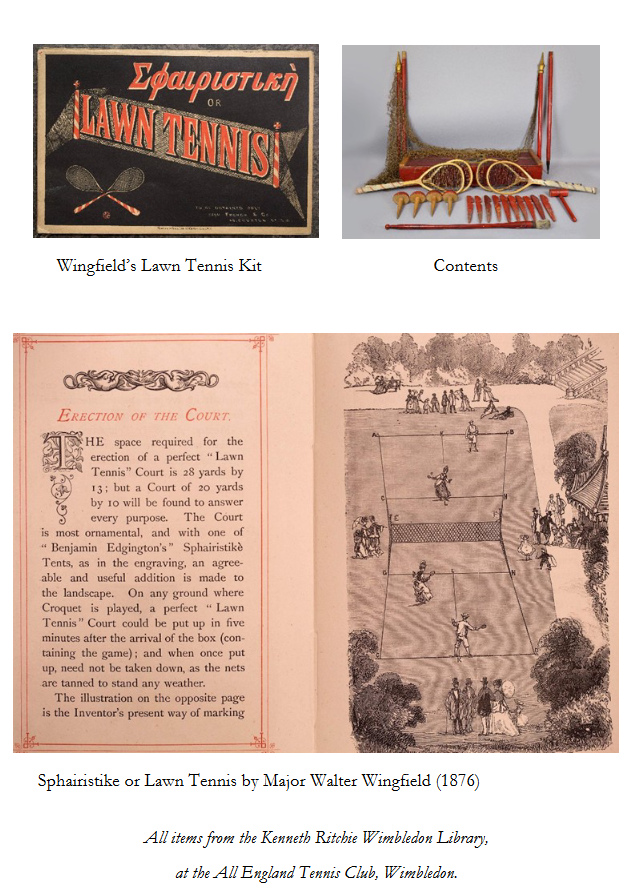

Tower and Town, July 2024 (view the full edition) (view the full edition)History Of Lawn Tennis150 years ago, in 1874, the game that has now become tennis was introduced on grass by a retired British Army officer, Major Walter Wingfield. His innovation contained rackets, balls, posts, a net, and everything else needed to mark out a court in a garden in order to play the game. His invention was also initially known as 'Sphairistike' (the ancient Greek for 'belonging to the ball'), but unsurprisingly this name did not catch on. Despite costing five guineas, the equivalent of over £350 today, Wingfield's first 1000 sets sold out rapidly.  Wingfield's timing could not have been better, as the public were craving a game that both gentlemen and ladies could play, and which was more energetic than the then fashionable pastime of croquet. Wingfield ingeniously marketed the portable equipment for the game, advertising in the press and gaining endorsements from influential society figures. In under a year the sport had spread from Great Britain around the world, and patents were approved internationally for his portable court design. Other pioneers quickly released similar sets of equipment with varying rules. John Hinde Hale created a game called 'Germains Lawn Tennis', named after his house in Sussex, and Harry Gem and Augurio Perera, in Birmingham, also had their own version of the game. However, it was Wingfield who first used the term 'lawn tennis.' It was his game that was unique in that it used hollow 'India-rubber' balls and it was played on an hourglass shaped court. The game that Wingfield and others pioneered became so popular that the then All England Croquet Club, at the suggestion of one of its Members, Henry 'Cavendish' Jones, decided to turn one of its croquet lawns to the pastime of lawn tennis. Soon after, in 1877, the now renamed All England Croquet and Lawn Tennis Club held its very first Championships. Eventually the hourglass court used by Wingfield was replaced by the now familiar, and instantly recognisable, rectangular one. Jones, as Championships Referee, worked with his Championships sub-committee to further refine the game. The changes introduced included adjusting the height of the net, the location of the service lines, and the scoring system. These pioneers' endeavours helped shape Wingfield's invention into the sport of tennis that is now played and enjoyed by millions around the world. Enthusiasts owe much to Major Wingfield and the global phenomenon which he created 150 years ago. Wimbledon Website |